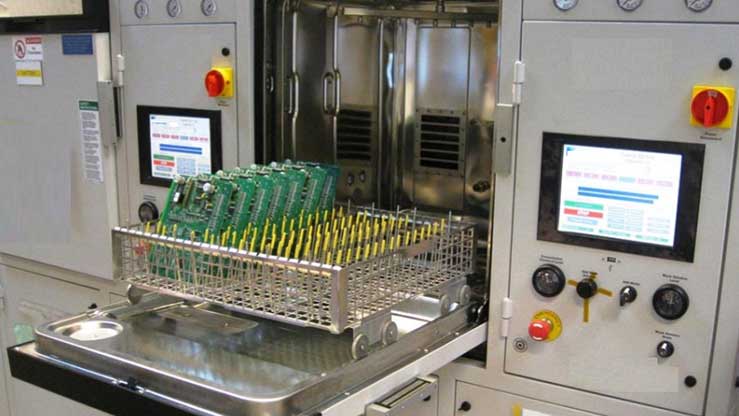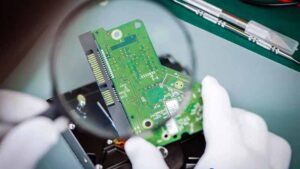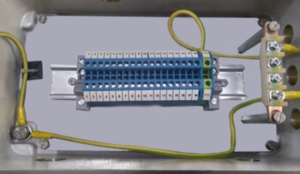How to Clean Circuit Board Corrosion?
PCB cleaning process with an ultrasonic cleaner is the quickest and most efficient approach to remove accumulated dirt, dust, and other microscopic particles.
Now, before we go into the processes, you should be aware of something very crucial. This procedure is only for circuit boards with no components or waterproof components! In addition, practically all methods for a process like this one entail the use of water, which can damage the board if it is not removed or protected appropriately. You should also use a saponifier to clean electronic-based circuit boards. It’s a solution created exclusively to react with the acid residue left on the board, resulting in a soapy substance that can be readily washed away.
Basic Features:
- Ultrasonic Cleaners for PCBA Cleaningremoves solder paste, solder balls, and flux residue & rapidly achieves high level of cleanliness.
- Will not damage delicate assemblies but Cleans components with blind holes or complex geometries.
- Uses aqueous or semi-aqueous cleaning agent with an ultrasonic frequency range of 33+/-3 KHz.
Material Required For Handling:
- Required PCBA’s
- Aqueous solutions (preferably-DI Water or Electronic-grade IPA)
- ESD Brushes & Cleaning cottons/Clothes
- Safety gears (Protective rubber hand gloves, Protective shoes/ chapels, mouth mask & goggles)
Working Principle:
- The frequency generator at the bottom of the cleaner used to create some frequencies correspond to the ultrasonic frequency (>18 KHz).
- This in turn transformed as mechanical vibrations using electromechanical transducers.
- The vibrations will result in creation of large amount of (Millions) vacuum bubbles in the aqueous solution.
- This vacuum bubbles in turn implodes due to pressure and create highly effective pressure wave- (Cavitations).
- This cavitations results the removal of flux residues, solder paste remnants, solder balls or any other unwanted particles from the PCBA effectively.
- After cleaning, PCBA’s are subjected to dry properly under warm air blow and will be inspected by the QA/ process person for cleanliness quality.
Procedure:
- Collect the required PCBA’s from the PRD supervisor and keep it in the specified area until the U-cleaner is ready
- Check for critical & sensitive components like sensors, wired components (transformer, Inductor, choke), relays, etc… on the PCBA and if found any take the advice from the process engineer for cleaning.
- Dip the 1st /sample PCBA in the aqueous solution in a proper way and set the timer according to the complexity.
- Use ESD brushes and fresh IPA to wipe out the removed flux residues & other foreign particles from the cleaned PCBA.
- Dry it under the warm air blower or keep it for baking @ 55’C for 30 Minutes.
- Let the process engineer to inspect the 1st PCBA for the cleanliness & other issues and if it’s found okay process for the remaining PCBA’s.
- In case of any minor issues, change the machine parameters accordingly to match the requirement.
- Handover the PCBAs to the QC department once the whole cleaning process completes.
EMSxchange Enables you to select a Printed Circuit Board assembly suppliers meeting your Required PCBA Manufacturing Capability, capacity and Certification Criteria from a global PCB Assembly manufacturer base. EMSXchange takes complete responsibility and ownership for your electronic manufacturing process and all its deliverables from contract manufacturing supplier selection to manufacturing to quality inspection to shipment and delivery to your door. EMSxchange Electronic Manufacturing Partners Profile includes:
Argus Sytems (AESPL) – PCBA, Cable Assembly, Box Build.
Cerra Systems inc – PCB Manufacturing.




